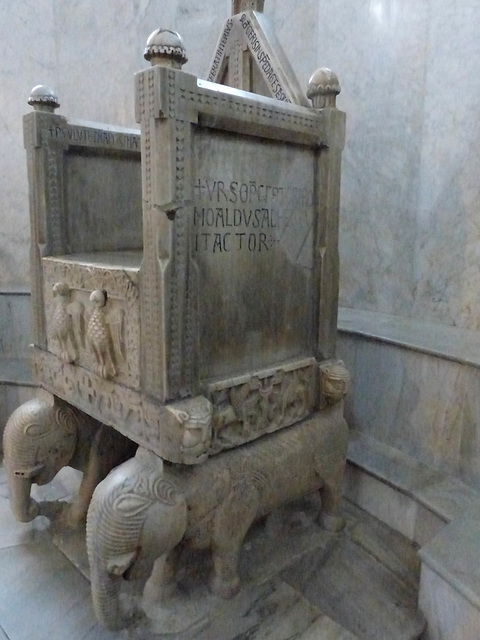Canosa di Puglia - Basilica di San Sabino
Canosa di Puglia - Mausoloei di Boemondi
Canosa di Puglia - Mausoloei di Boemondi
Canosa di Puglia - Mausoloei di Boemondi
Canosa di Puglia - Mausoloei di Boemondi
Canosa di Puglia - Mausoloei di Boemondi
Canosa di Puglia - Mausoloei di Boemondi
Canosa di Puglia - Mausoloei di Boemondi
Castel del Monte
Castel del Monte
Castel del Monte
Castel del Monte
Castel del Monte
Castel del Monte
Castel del Monte
Corato - Chiesa di San Vito
Corato - Chiesa di Santa Maria Maggiore
Corato - Chiesa di Santa Maria Maggiore
Ruvo di Puglia - Concattedrale di Ruvo di Puglia
Ruvo di Puglia - Concattedrale di Ruvo di Puglia
Ruvo di Puglia - Concattedrale di Ruvo di Puglia
Ruvo di Puglia - Concattedrale di Ruvo di Puglia
Ruvo di Puglia - Concattedrale di Ruvo di Puglia
Canosa di Puglia - Basilica di San Sabino
Canosa di Puglia - Basilica di San Sabino
Canosa di Puglia - Basilica di San Sabino
Canosa di Puglia - Basilica di San Sabino
Canosa di Puglia - Basilica di San Sabino
Canosa di Puglia - Basilica di San Sabino
Canosa di Puglia - Basilica di San Sabino
Canosa di Puglia - Basilica di San Sabino
Canosa di Puglia - Basilica di San Sabino
Puglia
Bovino - Chiesa di San Marco
Bovino - Chiesa di San Marco
Bovino - Concattedrale di Santa Maria Assunta
Bovino - Concattedrale di Santa Maria Assunta
Bovino - Concattedrale di Santa Maria Assunta
Bovino - Concattedrale di Santa Maria Assunta
Bovino
Orsara di Puglia - Abbazia St. Angelo / Grotta St.…
Orsara di Puglia - Abbazia St. Angelo / Grotta St.…
Orsara di Puglia - Grashopper
Troia - Concattedrale di Troia
Troia - Concattedrale di Troia
Location
See also...
Keywords
Authorizations, license
-
Visible by: Everyone -
All rights reserved
-
60 visits
Canosa di Puglia - Basilica di San Sabino


Legends tell, that the Homeric hero Diomedes founded "Canusion", the town existed already in early Etrscian times and later became a Greek polis. In Roman times it was a colony and had a large amphitheatre. End of the 3rd century it was the capital of Apulia and Calabria.
Bishops are known here already in the 4th century, when one of them took part in a Council. The area suffered from Muslim invasions and got completely destroyed in 844. Rebuilding took place a century later, It was under Lombardian rule until the Norman conquest and the establishement of the Kingdom of Sicily. Under Bohemund I of Antioch (+ 1111), son of Robert Guiscard, it regained some of its earlier importance.
The Cathedral of San Sabino was founded in the 8th century by the Lombards. When it was comleted in 1101 it was named after St. Sabinus of Canosa in 1101. It was an example of Romanesque/Byzantine style. After the earthquake of 1851, the cathedral was severely damaged and the restoration work led to the reconstruction of the facade.
Placed in the centre of the apsis is the Bishop´s thone ("cathedra"), another medieval masterwork. It was created by Master Romualdus for Bishop Ursus, the last Archbishop of Canosa, who was murdered in 1089.
Romualdus´ style is strongly influenced by Byzantine works.
Th cathedra is to large to be "comfortable" and the front plate with the eagles was probably added later. When Bishop Ursus comissioned it, the diocese of Bari was slowly "overtaking" the older one in Canosa. So later this the large cathedra became a kind of episcopal power symbol, as the bishop did not reside here any more, but in Bari.
Seen here on the side is the "signature", that mentions the commissioner and the artist.
Bishops are known here already in the 4th century, when one of them took part in a Council. The area suffered from Muslim invasions and got completely destroyed in 844. Rebuilding took place a century later, It was under Lombardian rule until the Norman conquest and the establishement of the Kingdom of Sicily. Under Bohemund I of Antioch (+ 1111), son of Robert Guiscard, it regained some of its earlier importance.
The Cathedral of San Sabino was founded in the 8th century by the Lombards. When it was comleted in 1101 it was named after St. Sabinus of Canosa in 1101. It was an example of Romanesque/Byzantine style. After the earthquake of 1851, the cathedral was severely damaged and the restoration work led to the reconstruction of the facade.
Placed in the centre of the apsis is the Bishop´s thone ("cathedra"), another medieval masterwork. It was created by Master Romualdus for Bishop Ursus, the last Archbishop of Canosa, who was murdered in 1089.
Romualdus´ style is strongly influenced by Byzantine works.
Th cathedra is to large to be "comfortable" and the front plate with the eagles was probably added later. When Bishop Ursus comissioned it, the diocese of Bari was slowly "overtaking" the older one in Canosa. So later this the large cathedra became a kind of episcopal power symbol, as the bishop did not reside here any more, but in Bari.
Seen here on the side is the "signature", that mentions the commissioner and the artist.
- Keyboard shortcuts:
Jump to top
RSS feed- Latest comments - Subscribe to the comment feeds of this photo
- ipernity © 2007-2024
- Help & Contact
|
Club news
|
About ipernity
|
History |
ipernity Club & Prices |
Guide of good conduct
Donate | Group guidelines | Privacy policy | Terms of use | Statutes | In memoria -
Facebook
Twitter

Sign-in to write a comment.